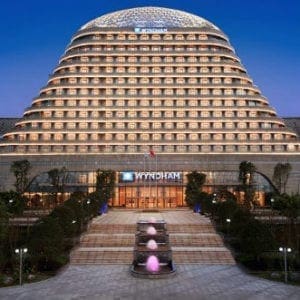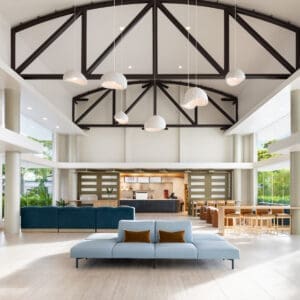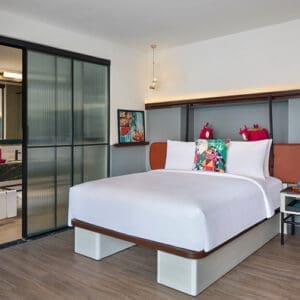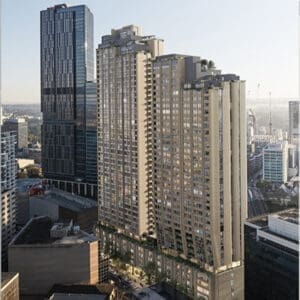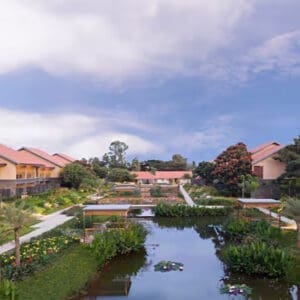With The New York EDITION, Ian Schrager and Marriott International have respond to the changing travel landscape by introducing what they believe is a new luxury for a new generation.
 The New York EDITION pays more than lip service to being a home away from home. Inspired by New York City’s turn of the 20th century private clubs, Fifth Avenue’s Gilded Age Mansions and Stanford White’s architectural masterpieces, the hotel’s residential feel is designed to instantly draw guests in, with the hotel aiming to serve as a refuge in the city and from the city. It is akin to staying in the guest room of a private home, rather than a hotel room.
The New York EDITION pays more than lip service to being a home away from home. Inspired by New York City’s turn of the 20th century private clubs, Fifth Avenue’s Gilded Age Mansions and Stanford White’s architectural masterpieces, the hotel’s residential feel is designed to instantly draw guests in, with the hotel aiming to serve as a refuge in the city and from the city. It is akin to staying in the guest room of a private home, rather than a hotel room.
Despite the inherited pedigree of this building, it was essential that the interiors were infused with a modern, sophisticated design vernacular.
“I’m always interested in upsetting the status quo and going off in new directions. Combining opposites and unexpected surprises has always been fascinating to me. When two opposing aesthetics come together, they either fail miserably or create alchemy. If done well, the presence of one will always serve to showcase the other. It takes the experience of staying in a hotel to a whole new level and the end result is impossible to categorize,” Schrager says.
The New York EDITION makes its debut in the world-famous, iconic “Clocktower” building, otherwise known as the Metropolitan Life Insurance Company Tower. The building was designed by the architectural firm of Napoleon LeBrun & Sons and completed in 1909. At the time, it was the tallest building in New York City until the Woolworth building opened in 1913. It is situated on Madison Square Park in a neighborhood of the city referred to as NoMad.
The area has recently been transformed by the development of myriad luxury residential condominium buildings and fine dining restaurants, and is now ripe for luxury hotels. It sits right on the border between uptown and downtown, north of the Meatpacking District, Chelsea, Greenwich Village, Soho and Tribeca, and south of the 57th street shopping corridor and Times Square. With forces pushing from every direction, this area, together with Hudson Yards, is fast becoming the new center of town.
“Luxury has a new address,” says Arne Sorenson CEO of Marriott International. “With the opening of our first EDITION hotel in New York City and the loving restoration of the century old Clocktower building, we have ushered in a new era of timeless hospitality.”
The 273-room hotel will be activated by day and by night with a restaurant by London’s hottest young chef Jason Atherton, two bars and a billiard room. Inside, much of the building’s existing design was embraced, retaining and restoring the original dark wood on the walls and the floors on the second floor.
But, the old was offset with the new to add a downtown New York City feel. The lobby and lobby bar’s classic Venetian plaster walls starkly contrast the custom cast concrete oversized windows that look out over Madison Square Park. The 30ft-long hand forged blackened steel fireplace and the sculptural spiral staircase leading up to the second floor are modern interpretations of those found in the grand mansions of Millionaire’s Row. The Jean-Michel Frank-inspired coffee tables and chairs of the 1920’s, Christian Liagre-designed floor lamps, concierge desk and chair, and lounge chairs inspired by modernist Erik Koling Andersen and Alvaro Alto all with fabrics and leathers in soft tones of oatmeal, silver and white, create a light and airy feel that is both warm and inviting.
“It is impossible to label this look,” says Schrager. “And, rightly so. We are never out for a look. We are out for a feel and an experience.”
The restaurant, on the second floor overlooking the park, is where the subtle play of modern and period design continues in new forms. Three intimate dining rooms, a parlor with a billiard table and a library serving cocktails, after dinner drinks and dessert, are separate as in a private home, but come together seamlessly to form a whole. Drawing from over four centuries of art and design, the rooms feature original herringbone oak floors, original mahogany wainscoting on the walls, and a restored Venetian plaster ceiling. The velvet chairs and banquettes, upholstered in rose, green and blue, are inspired by the vibrant colors of the Dutch masters, notably Vermeer. Each of the three dining areas has a large chandelier by modernist designer Eric Schmitt. They are made from three black iron arms that support a 7ft diameter ivory plaster ring.
Above the lobby and the restaurant are the 273 guest rooms. Guests enter into a dark oak wood paneled foyer, much as they would if they were entering an upscale New York apartment in the 1920s. The rooms are serene, comforting and feel like an oasis from the outside world. There is visual drama, too. The original windows in each room perfectly frame the New York City skyline. Many of the suites have 180-degree views of Manhattan and the 1,400 square foot penthouse apartment has 360-degree vistas. Each room has a classic, extra long and deep floating white oak desk, inspired by Jean-Michel Frank, and a bed with a dark walnut headboard and a custom-built walnut platform with bespoke walnut nightstands.


